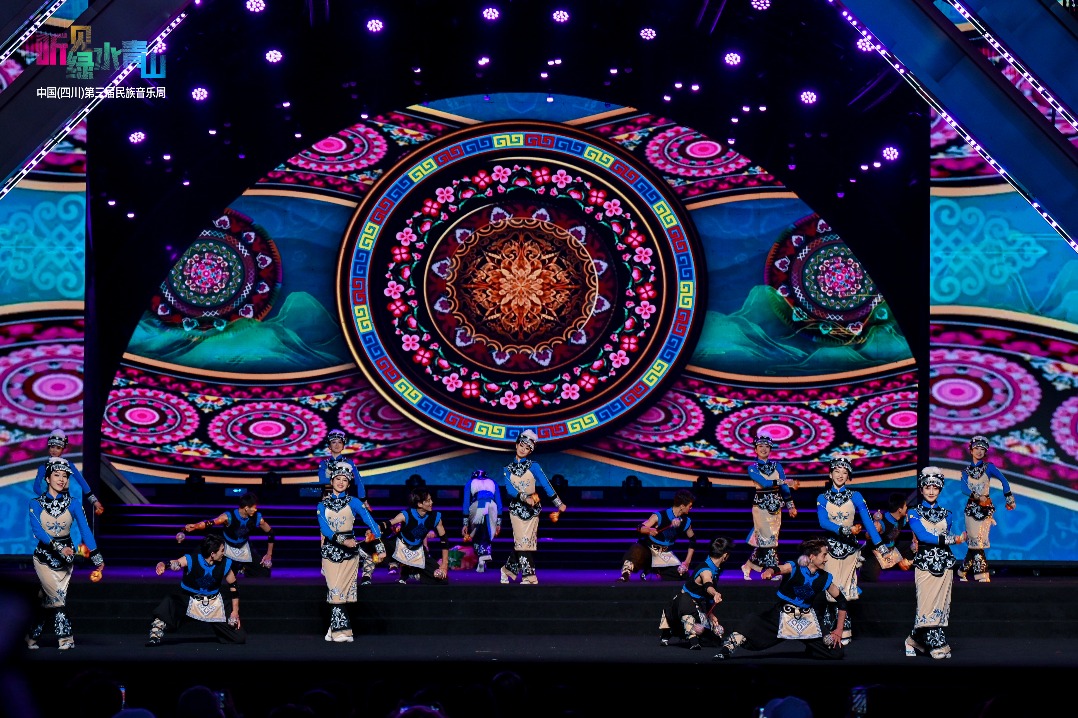Xinjiang's Atlas silk rediscovers its sheen

URUMQI-Resting her phone on a stand and adjusting the lighting, Buwizorihan Metruzi started her livestreaming session, selling the traditional handicrafts of a small village on the edge of the Taklimakan Desert.
"Look! This handmade Atlas silk shawl has bright colors and exquisite patterns. You can get discounts if you order it right now," she tells her online audience, located mostly in big cities like Beijing, Shanghai and Guangzhou, Guangdong province.
Soft, smooth and brightly colored, Atlas silk has long been used by Uygur women in Northwest China's Xinjiang Uygur autonomous region for clothing and interior design. The time-honored silk-making technique has been listed as a national intangible cultural heritage.
Aznabazar village where Buwizorihan Metruzi lives is a renowned production center for Atlas silk in Xinjiang's Hotan prefecture. Virtually every household possesses the technical know-how of this traditional handicraft.
She has another identity here, that of guide at the Jiya Liren Atlas silk plant. Reeling silk, spinning thread, dyeing and weaving-the production techniques of the ancient cloth have remained largely unchanged in this factory.
Due to meager profits, inconsistent standards and a lack of sales channels, the Atlas silk industry was once in decline. It was the arrival of poverty alleviation cadres that helped the ancient silk craft regain its shine, she says.
To rejuvenate the industry, the cadres invited experienced craftspeople to give free training to villagers. They also sought the instruction of designers from silk textile enterprises in the cities of Suzhou, Jiangsu province, and Hangzhou, Zhejiang province, which are considered China's major silk production centers.
With the help of experts, the product portfolio of local plants has been expanded from silk fabric and dresses to over 20 items, such as neckties, wallets, sun hats and handbags.
Atlas silk manufacturers have been galvanized by the popularity of Xinjiang's rural tourism. The Jiya Liren Atlas silk factory has been turned into a multifunctional production base and a national tourism destination, showcasing the whole traditional process of silk production.
Attracted by the booming Atlas silk industry, some young people have returned to the village and started their own businesses. Abdu Haliq is one of them.
After graduating from a Beijing university, he returned to the village and opened an Atlas silk design studio. The qipao dress with Atlas silk elements that he designed has caught the fancy of young people.
"I tried to combine the traditional craft with modern fashion elements. I feel very fulfilled to be able to promote the featured industry in my hometown," he says.
Currently, the Atlas silk industry in Aznabazar village has an annual output value of nearly 5 million yuan ($785,000) and provides stable jobs for more than 100 farmers.
"I believe our hometown silk will be sold to more places, fattening the villagers' wallets and weaving a colorful life for us," Buwizorihan Metruzi says.




































